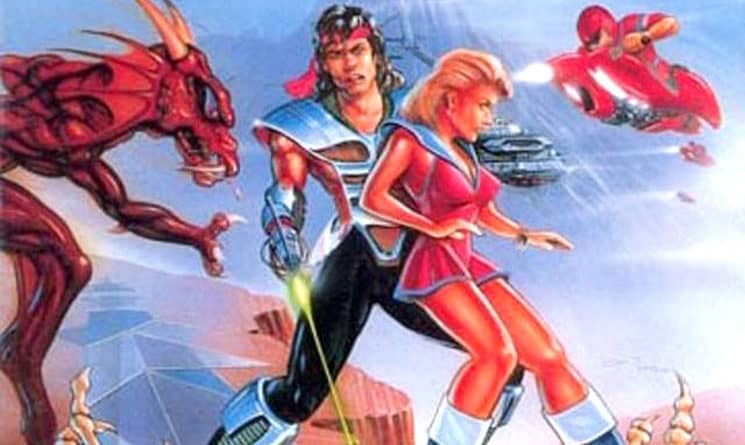Rediscovering video games of the past…today!
by Zach Foote
“Clash at Demonhead” (Vic Tokai, 1990)
Released almost a quarter-century ago, “Clash at Demonhead” is one of the strangest video games ever created. Developer Vic Tokai had seen minor American success with 1988’s “Golgo 13,” but the company was still looking for the bigger success that other side-scrolling Nintendo Entertainment System adventure games such as “Metroid” and “Castlevania” had achieved. Vic Tokai wanted its own sexy bounty hunter or handsome vampire killer to hang a franchise on. Instead, it gave us Billy “Big Bang” Blitz.
“Nintendo Power” pitched the game thusly: “Guide Sgt. Bang through the twisted passages of Demonhead in search of a kidnapped professor and his Doomsday bomb!” Simple enough plot, no? In truth, it doesn’t matter. It exists only for the designers to throw as many absurd villains and insane scenarios at the digital wall to see what sticks. The beauty of the game is that so much sticks. Enough is familiar — jump, shoot, jump, kill, swim, earn money, find hearts — to draw in the casual player. By 1990, there had already been a decade of console tropes to subvert, and designer Haruhiko Kawamura subverts them all, when he’s not busy creating brand new ideas foreign to most mass market games of the time.
In most games, good guys fight bad guys. In “Demonhead,” the villains grow impatient and try to destroy each other. One of those villains? Mush, a sunglasses-loving caveman who has a fanged cycloptic mushroom boomerang hat. He’s not to be confused with Shark, the half-man, half-shark with piranhas for hands. Did I mention the depressed fairy? Or the loyal, brainwashed-by-ancient-aliens sidekick? “Demonhead” cheerfully embraces clichés only to smash them later on.
Adopting the trail that “Metroid” blazed, “Demonhead” presents a relatively open-ended narrative. You can play the upper, more difficult levels early on, but this exposes you to characters and items you know nothing about. The random confusion only adds to the game’s gonzo feel. Billy’s exaggerated facial reactions are often not far from the player’s own when greeted by challenges such as Tom Guycot, the “Chief of Governors,” who just happens to be a flying skeleton with fancy red boots and matching scarf.
Japanese games ported to North American consoles were famous for having their strangeness toned down for U.S. audiences — that’s how the Arabian-themed “Doki Doki Panic” morphed into “Super Mario Brothers 2.” Few alterations were made to “Demonhead,” and that’s the secret to the game’s sense of fun and spontaneity. Where else can you find a villain who issues threats like, “I’ve already taught your friend who went off the cliff how to use them”? And the music, composed by Michiharu Hasuya’s, sounds like a sped up blend of Russian marches and Greek electronic; it won’t make any chiptune best of lists, but it matches the game’s all-over-the-map style.
Vic Tokai never found their own Mega Man, and after a spate of underperforming Super Nintendo titles, the company quietly left the video game business. In 2014, thanks to the proliferation of YouTube tutorials and a name check in 2010’s “Scott Pilgrim vs. the World,” 1990’s intensely strange “Clash at Demonhead” remains the most well known of all the Vic Tokai properties. The gaming world has a seemingly infinite amount of Samus Arans and Simon Belmonts, but there’s only room for one Billy “Big Bang” Blitz.

